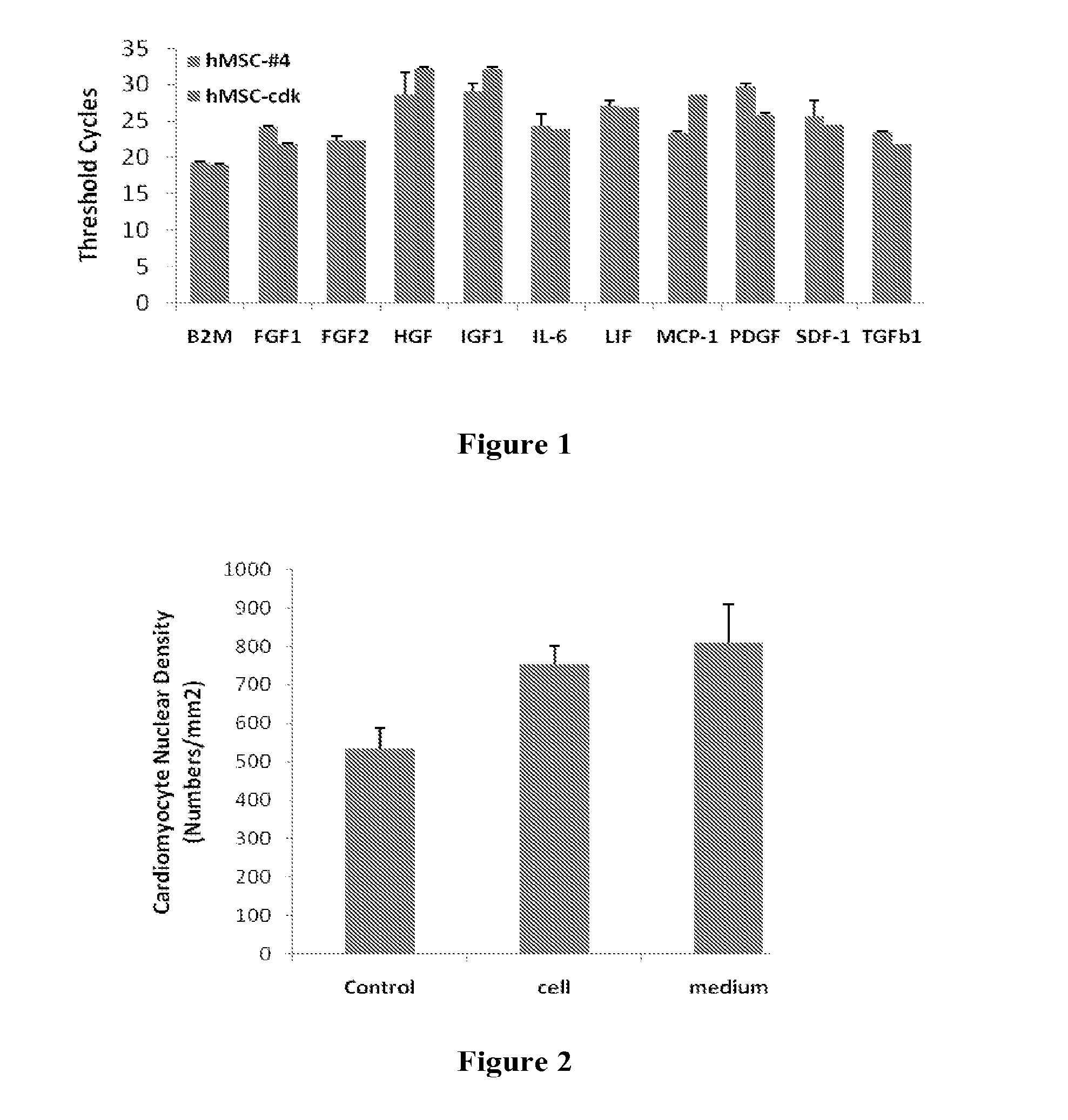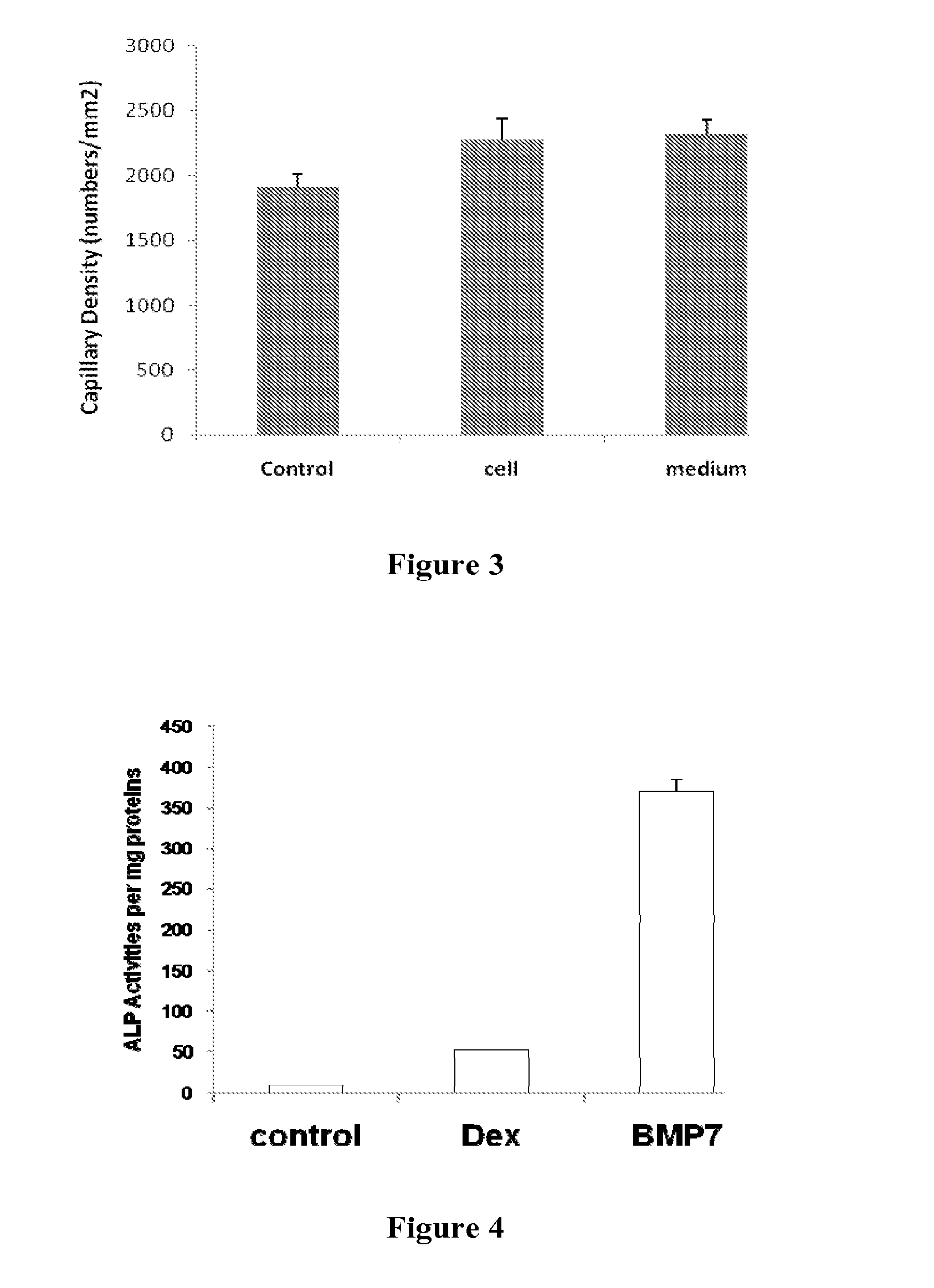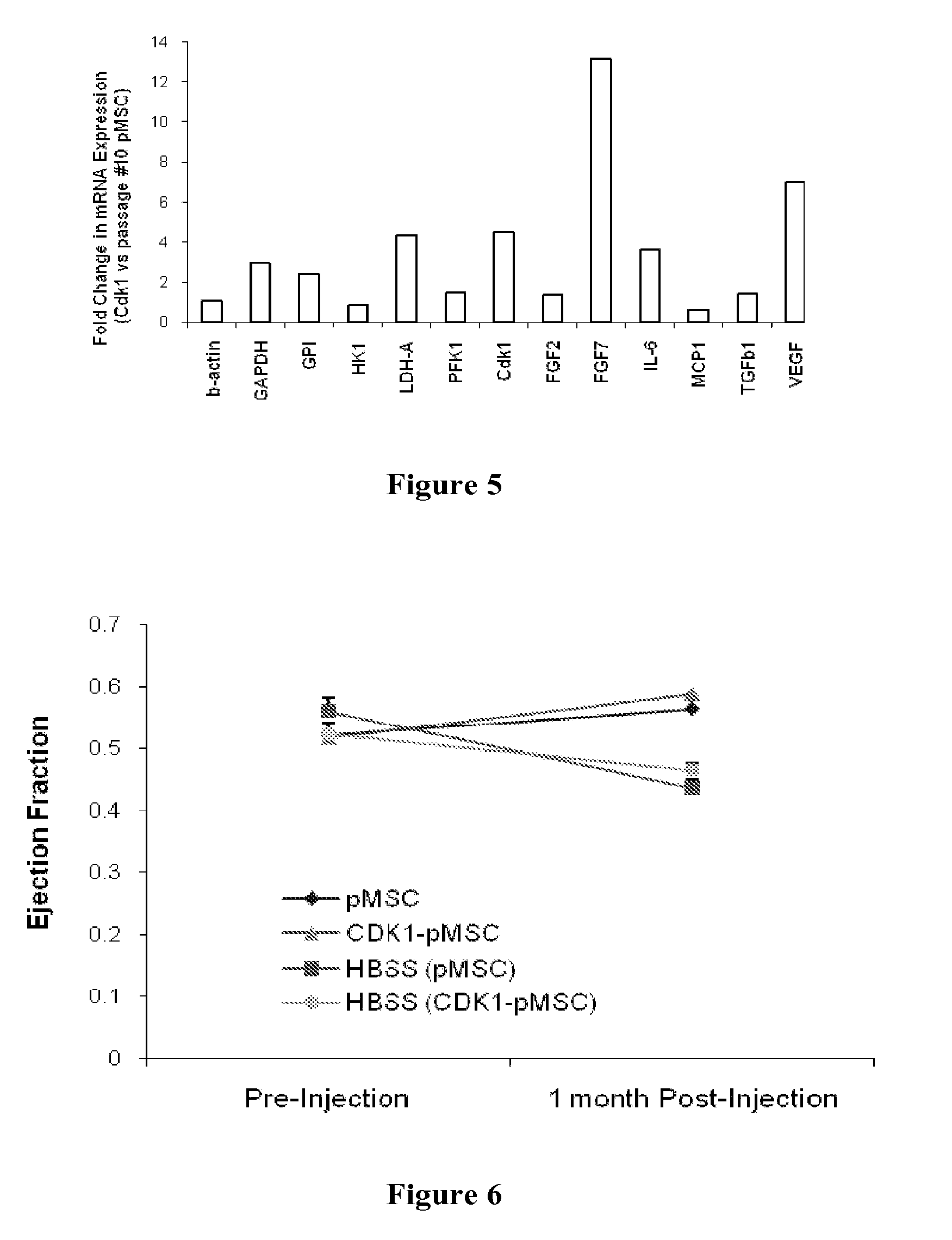Stem-Cell Material and Method of Use
a stem cell and material technology, applied in the field of stem cell material and method of use, can solve the problems of msc aging, high variability in pharmaceutical manufacturing, and future routine use of msc, and achieve the effects of stable stem cell lines, reduced cell manufacturing cost, and elimination or minimization of contamination risk
- Summary
- Abstract
- Description
- Claims
- Application Information
AI Technical Summary
Benefits of technology
Problems solved by technology
Method used
Image
Examples
example 1
[0050]We conducted a series of genetic engineering trials using porcine bone marrow MSCs. We also tested human bone marrow MSCs. Commercially available lentiviral vector DNA (#EX-B0070-Lv21) and a packaging vector DNA pLV-PK-01 were purchased from GENECOPOETA (Germantown, Md.). The DNA was transiently transfected into HEK293 cells using a standard calcium-phosphate method. Culture medium was harvested after one week and used to transfect MSCs. MSCs were incubated with the HEK293 culture medium for 3 hours, following which cells were washed twice with Hank's Balanced Salt Solution and refed with a regular growth medium.
[0051]Porcine and human MSCs were maintained in DMEM / F12 supplemented with 10% fetal bovine serum (FBS) and Mesenpro RS medium, respectively. Detailed MSC culture conditions have been documented. The following experiments were performed.
experiment 1
[0052]Porcine MSCs (passage 6) were plated on 35-mm dishes and grown to ˜80% confluency. Cells were then transfected with ˜5 μg of plasmid DNA vectors expressing Bcl-2, Ras-R12, VEGF, or YAF2 cDNA using a commercial DNA transfection kit (Biomedical Research Service, Buffalo, USA). These genes were selected for engineering based on their pro-survival and / or growth-regulating properties. Transfected MSCs were selected with 0.1-0.5 mg / ml G418. No viable cells were obtained from this trial.
experiment 2
[0053]Porcine MSCs (passage 5) were transfected with plasmid DNA vectors expressing Bcl-2 or Ras-R12 cDNA with an additional glycerol shock step. Transfected MSCs were selected with 0.2 mg / ml G418. No viable cells were obtained from this trial.
PUM
| Property | Measurement | Unit |
|---|---|---|
| Time | aaaaa | aaaaa |
| Fraction | aaaaa | aaaaa |
Abstract
Description
Claims
Application Information
 Login to View More
Login to View More - R&D
- Intellectual Property
- Life Sciences
- Materials
- Tech Scout
- Unparalleled Data Quality
- Higher Quality Content
- 60% Fewer Hallucinations
Browse by: Latest US Patents, China's latest patents, Technical Efficacy Thesaurus, Application Domain, Technology Topic, Popular Technical Reports.
© 2025 PatSnap. All rights reserved.Legal|Privacy policy|Modern Slavery Act Transparency Statement|Sitemap|About US| Contact US: help@patsnap.com



